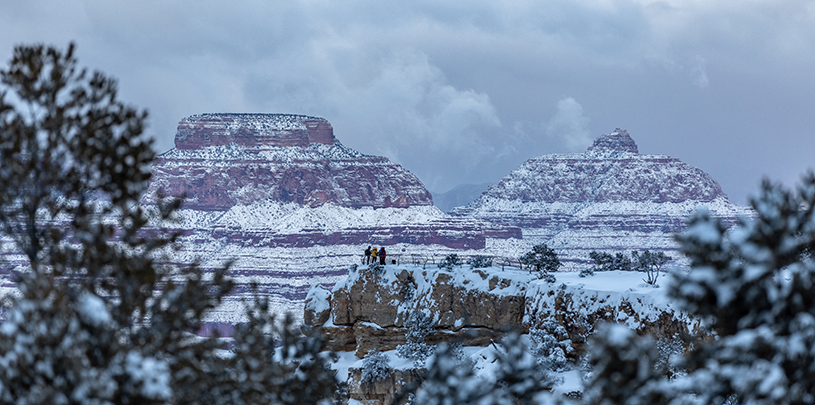
by Amber Reimondo, Energy Director
Last year was one of welcome progress for those wishing to permanently protect the Grand Canyon from the threat of uranium mining. The Grand Canyon Centennial Protection Act — a bill that would permanently ban uranium mining around the Grand Canyon — was introduced and passed through the House with bipartisan support. And before the year’s end, Arizona Senator Kyrsten Sinema introduced her version of the bill in the Senate.
Yet 2019 was also a year of mounting threats as President Trump and his administration listened closely to the requests of ailing uranium mining companies and launched a working group tasked with recommending ways for the U.S. government to support the uranium industry, which holds a toxic grip on the Colorado Plateau.
We expected that the Nuclear Fuel Working Group’s recommendations would be made public when the White House received them last fall. But the days passed, and the announcement never came. Then earlier this month, inside President Trump’s 2021 budget proposal to Congress, came the first hint at something the working group may have asked for — government manufactured demand and taxpayer dollars for uranium mined on U.S. soil.
The president’s 2021 budget proposal includes a request for $150 million per year for 10 years ($1.5 billion total) for the purpose of establishing a U.S. uranium reserve, something an industry trade group had requested of the working group as a way of generating business for mining companies in the U.S. despite the global uranium market saturation and subsequent lack of demand for U.S. uranium.
In short, we don’t know. But a recent Politico report suggests the wait may soon come to an end and the working group’s recommendations could be available as soon as this week. According to one uranium CEO’s conversation with InvestorIntel, we can expect a whittled down version of the 66 recommendations the working group originally sent to the White House in November.
As for what those recommendations might be, we know the Trump administration has set the stage for fulfilling the uranium industry’s wish list by designating uranium, for the first time in history, as a critical mineral. We know that the uranium industry and its supporters in the administration and Congress have asked for everything from a “buy American requirement” (requiring all government utilities to purchase 100 percent of their supply from U.S. mines), to removal of mining bans like the one around the Grand Canyon, to access to areas that are presently protected by national park, national monument, wildlife refuge, or other land use designations. And we know that while the Grand Canyon Trust and our partners shared our concerns with the working group back in September, the uranium industry has had much more direct access to the working group and its process.
We’ll keep you posted about the working group’s recommendations and any actions you can take as soon as the information is available. In the meantime, it’s important that your senators understand the importance of and support the Senate version of the Grand Canyon Centennial Protection Act.
A small victory in the legal case challenging Daneros uranium mine, near Bears Ears National Monument.
Read MoreGroundwater pumping at a uranium mine near the Grand Canyon will affect the canyon's springs, scientists says.
Read MoreA rally in Salt Lake City followed by a spiritual walk in White Mesa demonstrate the Ute community's determination to see uranium mill close.
Read More